Table of Contents
The geography of Madagascar is a captivating blend of diverse landscapes and historical significance. Situated off the southeastern coast of Africa, this island nation’s geographic location has played a pivotal role in shaping its history and cultural identity.
Nestled in the Indian Ocean, Madagascar geography beckons adventurous travelers with its vast rainforests, unique baobab trees, and diverse coastal regions. From exploring the lush rainforests of Andasibe to uncovering the cultural tapestry of Antananarivo, Madagascar’s diverse landscapes and rich history offer an unforgettable journey for intrepid tourists seeking a unique and enriching experience.
Madagascar physical geography paints a picture of awe-inspiring natural masterpieces. From the iconic Avenue of the Baobabs, representing the nation’s rich arboreal heritage, to the diverse ecosystems that span from the tropical rainforests to the semi-arid southern regions, Madagascar stands as a testament to nature’s grandeur.
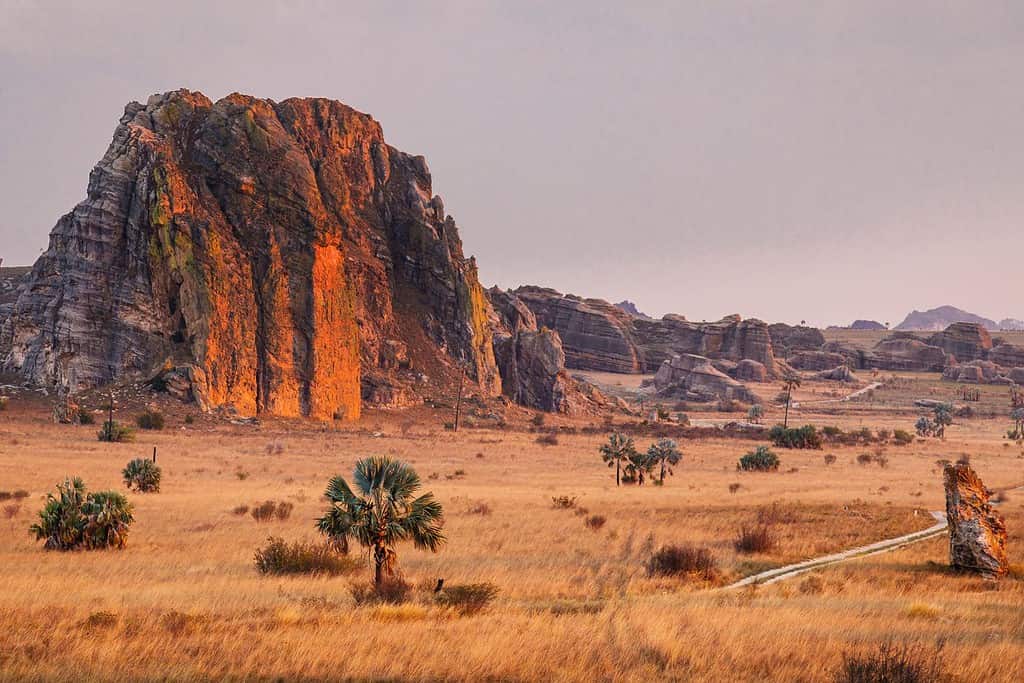
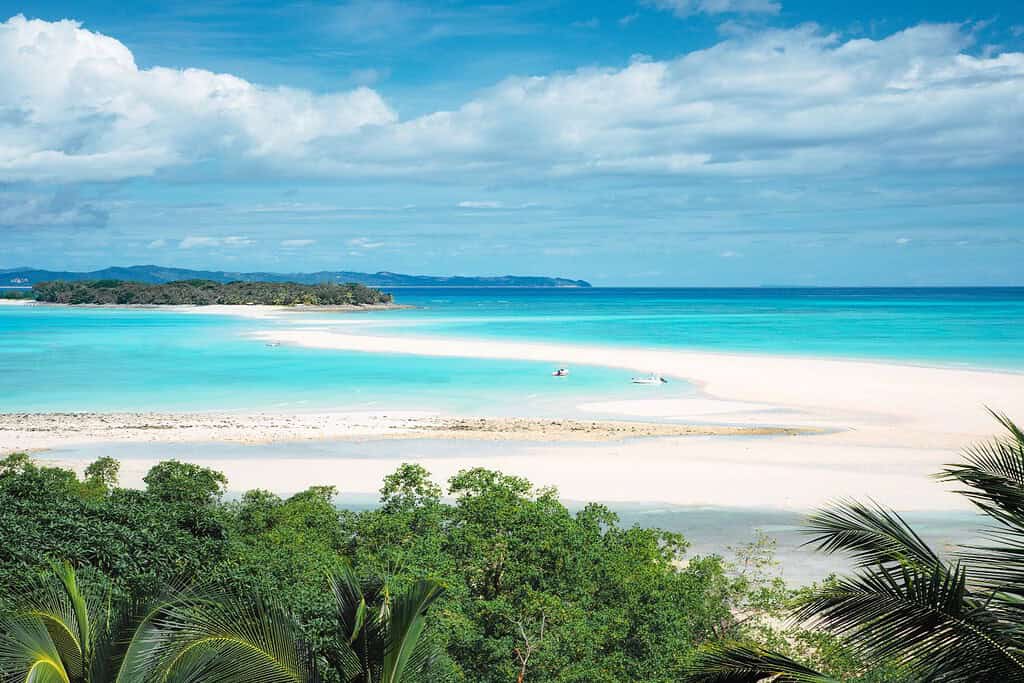

Top Geographic Features of Madagascar
- Tsingy de Bemaraha: These iconic limestone formations, also known as “Stone Forests,” are located in western Madagascar and are a UNESCO World Heritage site, influencing the island’s topography and tourism.
- Betsiboka River: One of Madagascar’s major rivers, the Betsiboka flows through the northwestern part of the island, providing essential water resources for agriculture and irrigation.
- Central Highlands: These elevated regions dominate the center of Madagascar, playing a crucial role in the country’s agriculture, especially rice farming.
- Spiny Forest: Located in the southwestern part of Madagascar, this unique ecoregion is characterized by its succulent plants and diverse fauna adapted to arid conditions.
- Avenue of the Baobabs: A renowned natural attraction, this dirt road features a prominent group of giant baobab trees, making it one of Madagascar’s most iconic landscapes.
- Eastern Rainforest: This biodiverse region on the eastern coast of Madagascar is home to a plethora of unique species, including lemurs, chameleons, and colorful frogs.
- Mangoky River: An essential river in Madagascar, the Mangoky River flows through the western part of the island, playing a significant role in supporting local communities and agriculture.
- Isalo National Park: This park in the southern part of Madagascar is known for its unique sandstone landscapes, deep canyons, and diverse flora and fauna.
- Nosy Be: Located off the northwest coast of Madagascar, this island is renowned for its pristine beaches, coral reefs, and marine wildlife, including whales and sea turtles.
- Ranomafana National Park: Situated in the southeastern part of Madagascar, this rainforest park is a biodiversity hotspot, home to various lemur species and other unique wildlife.
These geographic features play a crucial role in shaping Madagascar’s landscape, climate, and cultural history, making them essential elements in defining the island’s geography.
Madagascar Geography
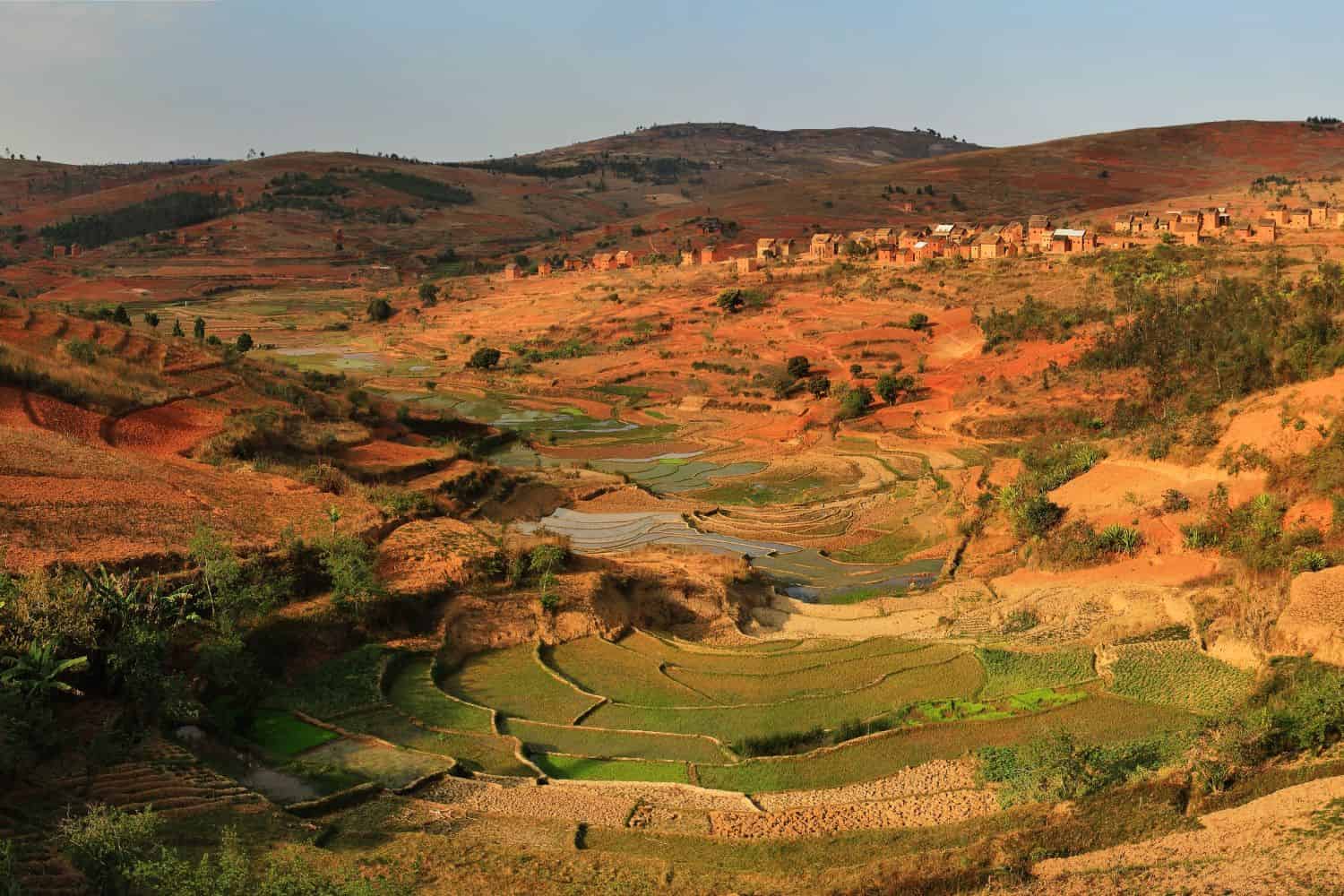
Exploring the Madagascar National Geographic canvas reveals a mesmerizing variety of geographic features. From the dramatic rainforests of the east to the unique spiny forests of the southwest and the world-renowned vanilla-producing regions of Sava, the island offers an alluring blend of natural wonders.
- Mountain Ranges – The Crown of Diversity: Just as documentaries capture the essence of towering mountain ranges, Madagascar is home to the impressive Tsaratanana Massif. These peaks not only enhance the island’s scenic allure but also house distinct biodiversity and have molded its cultural essence.
- Lakes – A Mosaic of Ecosystems: Madagascar’s Lake Alaotra, the largest freshwater lake, mirrors the tranquil landscapes often seen in photographs. These shimmering waters, edged by marshlands and rice paddies, echo the island’s diverse ecology.
- Rainforests – Green Canopies of Life: Like how documentaries portray lush habitats, Madagascar’s rainforests, like those in Andasibe-Mantadia National Park, boast dense canopies teeming with life. These forests narrate tales of indigenous traditions and the island’s ecological significance.
- Historical Sites – Echoes of Ancestors: Madagascar’s historical relics, like the royal hill of Ambohimanga, reminisce about journeys that delve into ancient cultures. These landmarks stand as a testament to the island’s rich Malagasy heritage.
- Ethnic Diversity – A Symphony of Cultures: Aligning with National Geographic’s spotlight on varied cultures, Madagascar is a blend of ethnic groups, including the Merina, Betsileo, and Sakalava. Each community brings forth unique traditions, dialects, and rituals, forming a lively cultural amalgamation.
- Wildlife – A Treasure Trove of Endemics: Madagascar’s reserves, such as Ranomafana National Park, mirror the emphasis on wildlife conservation. These areas act as vital sanctuaries for diverse species, many of which are found nowhere else on Earth, safeguarding biodiversity in this unique setting.
- Geological Wonders – Nature’s Masterpiece: The island’s geological marvels, like the Tsingy de Bemaraha limestone formations, spotlight Madagascar’s natural splendor amidst its varied landscapes. Such formations underline the awe-inspiring processes of nature in action.
- Remote Exploration – Islands of Adventure: The untouched islets around Madagascar beckon explorers, evoking the thrill of venturing into pristine realms. These little paradises provide insights into immaculate habitats and unparalleled ecosystems.
Madagascar geographic features are characterized by the significant presence of its rainforests. These lush green expanses, which stretch across much of the eastern side of the island, set the stage for the nation’s diverse landscape. The historic trade routes, vital for the exchange of spices and crafts, meander their way through these captivating forests, linking various regions of the island.
Traversing the Malagasy lands are the life-nurturing rivers, like the Mangoky and the Betsiboka, essential for agriculture and irrigation. Moreover, the semi-arid regions of the south and the island’s varied coastal zones further define Madagascar’s unique geography.
Madagascar Geographic Location
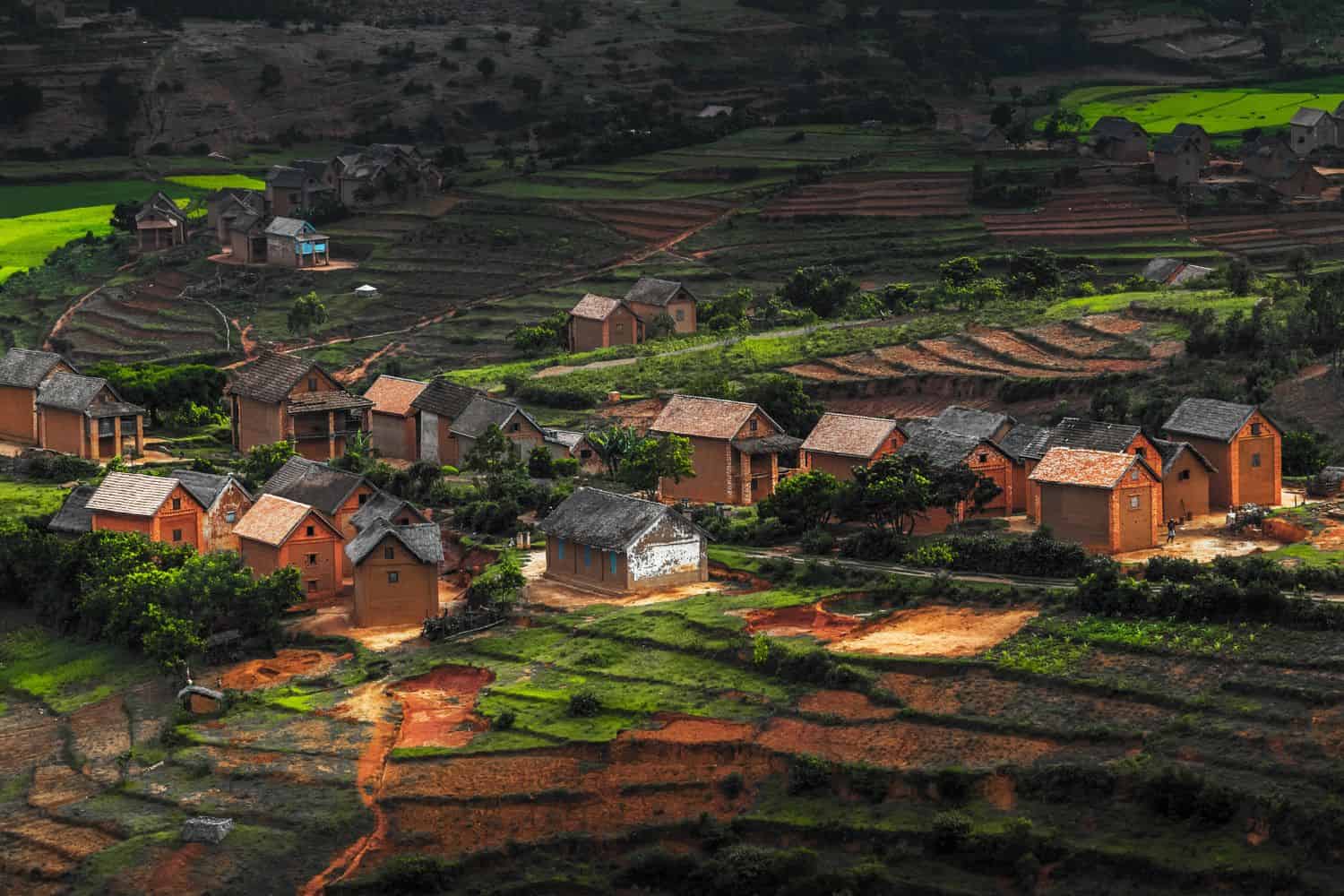
Madagascar geographic location is very strategic, and its position has played a significant role throughout history. Located off the southeastern coast of Africa, the island nation has been a nexus for trade, culture, and ideas, emphasizing its historical importance.
Borders of Madagascar
Being an island, Madagascar does not share land borders with any countries.
Geography of Antananarivo Madagascar
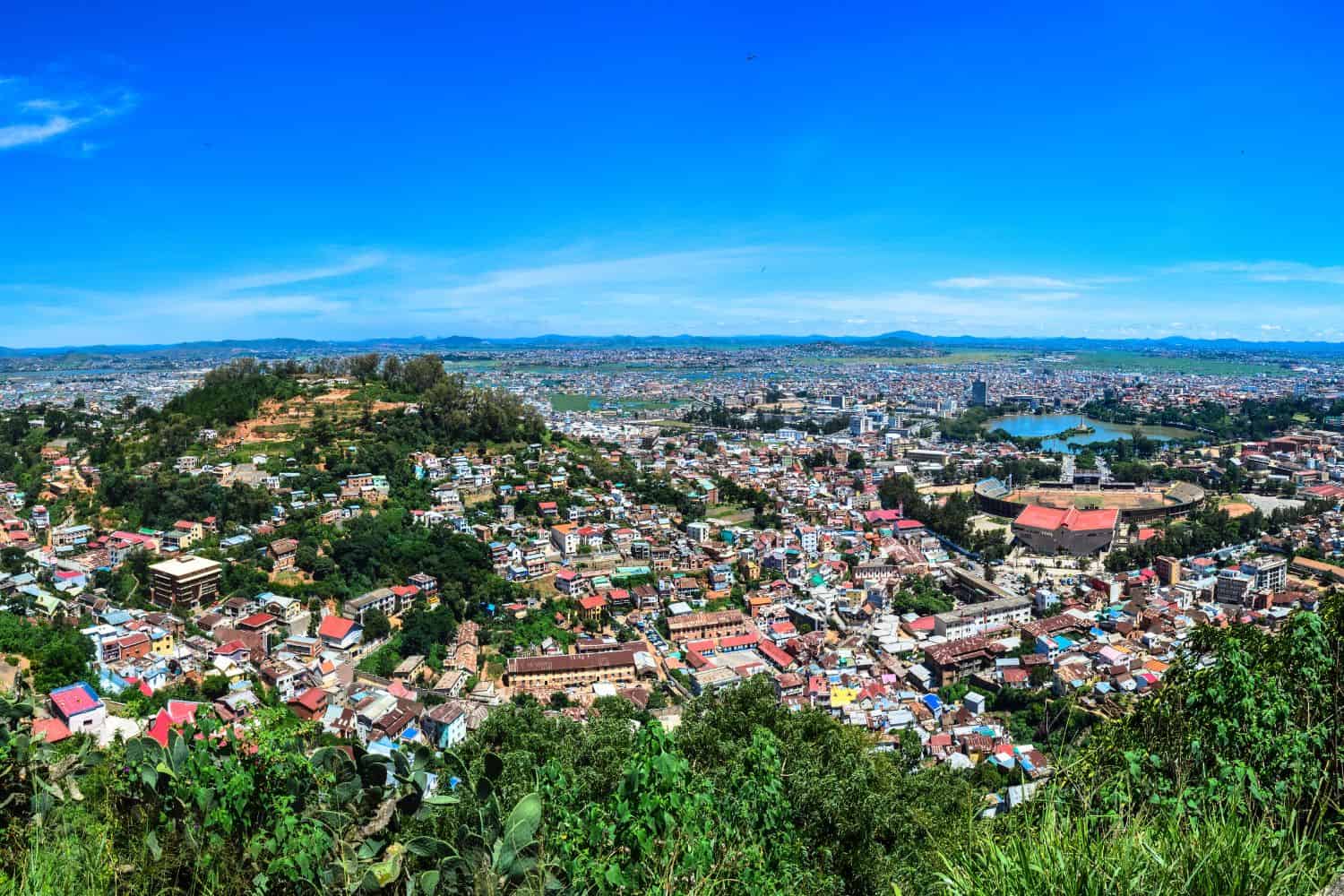
As the capital city of Madagascar, Antananarivo is a captivating microcosm of the country’s human geography. Here, various ethnic groups, including the Merina, Betsileo, Betsimisaraka, and Tsimihety, coexist, contributing to the city’s vibrant cultural tapestry.
Antananarivo, the capital city of Madagascar
- City of Contrasts: Antananarivo is known for its stark contrasts, where modern buildings coexist with traditional Malagasy homes, creating a unique blend of old and new.
- Lake Anosy: Lake Anosy borders the city, playing a significant role in its cultural and recreational activities.
- Antananarivo’s Elevation: The city is perched atop a ridge, with the rich highland landscapes surrounding it.
- Green Spaces: Antananarivo is home to several beautiful parks and green areas, including the Tsimbazaza Zoo, offering a serene escape amidst the bustling city.
- Antananarivo’s Historical Significance: With a history deeply rooted in the era of Malagasy kingdoms, Antananarivo has witnessed various epochs and played a pivotal role in the island’s politics and trade.
- Diverse Architecture: The city showcases a diverse architectural heritage, reflecting influences from Malagasy, French, and modern styles.
- Traditional Music: Antananarivo is a hub for traditional Malagasy music, and its vibrant sounds and rhythms can be seen and heard throughout the city.
- Rova of Antananarivo: The historic Rova, located on a hilltop in the heart of the city, is an iconic symbol of Madagascar’s royal history.
- Antananarivo’s Economy: The city serves as Madagascar’s economic and cultural hub, attracting people from all over the island seeking opportunities and education.
- Population Growth: Antananarivo has experienced steady population growth, with a significant influx of people from various regions of Madagascar, leading to urbanization and infrastructure challenges.
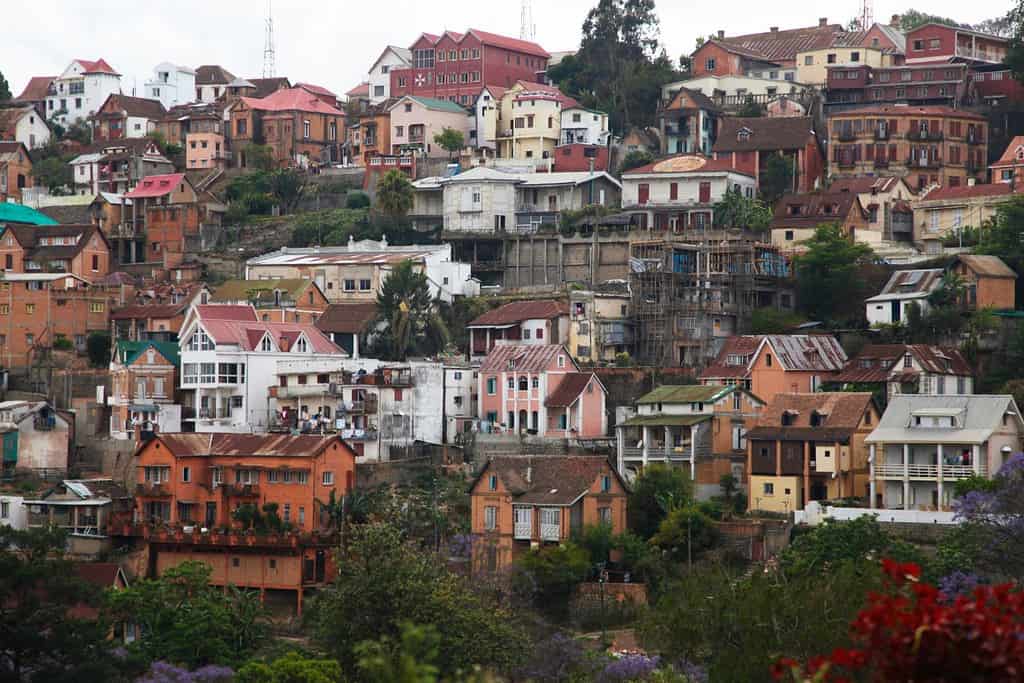
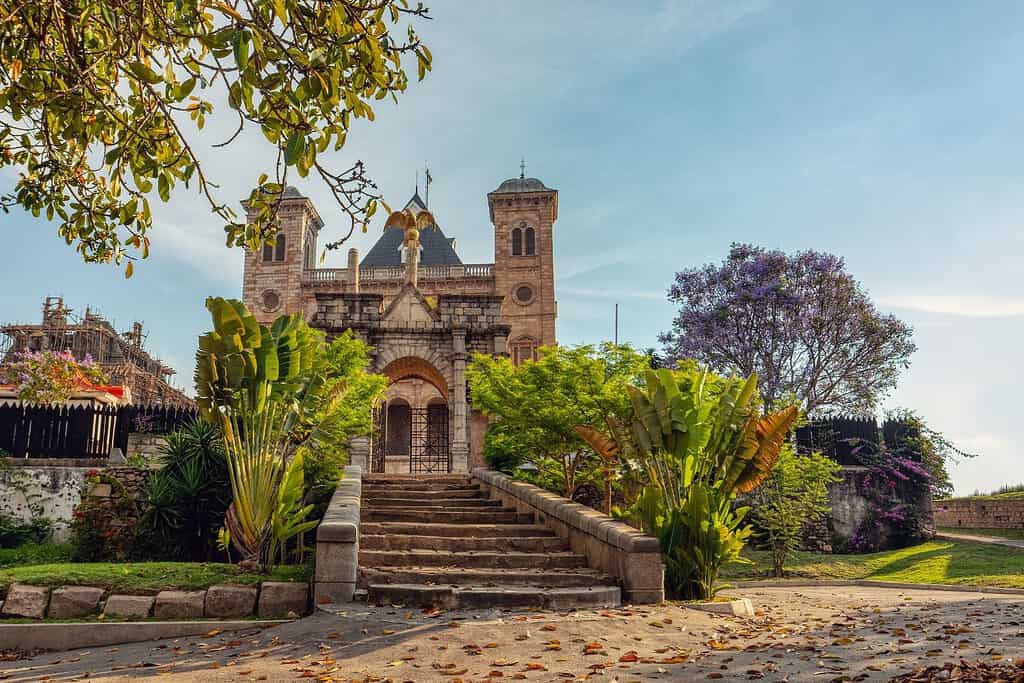
Historical Geographical Importance of Madagascar
Throughout the ages, Madagascar’s geographical significance has made it a sought-after stage for historical drama. As empires and nations rose and fell, from the Malagasy kingdoms to the European colonizers, Madagascar geographic position played a pivotal role in shaping the world’s history.
- Island Gem: Madagascar’s unique position as a large island off the southeastern coast of Africa has made it a strategic point for trade, cultural exchange, and historical events throughout time.
- Ancient Trade Networks: Madagascar’s shores witnessed ancient maritime trade routes, connecting various societies and facilitating the exchange of goods, ideas, and cultures.
- European Exploration: Madagascar was a key point of interest during the European explorations from the 16th century onwards, as they sought to establish their influence in the Indian Ocean.
- Struggle for Sovereignty: During various periods, Madagascar became a focal point of power struggles, both internally among Malagasy kingdoms and externally with European powers.
- European Colonization: Madagascar’s strategic location and unique biodiversity attracted European powers, especially France, leading to colonization and the shaping of its modern-day culture and demographics.
- Influence of Malagasy Kingdoms: Madagascar was home to various influential kingdoms, like the Merina and Betsileo, which played a crucial role in its early history and cultural development.
- European Pursuits: The European endeavors, especially those of the French in the 19th century, had a profound impact on Madagascar’s history, leading to a melding of cultures and traditions.
- Rainforests and Local Tribes: The dense rainforests of Madagascar, inhabited by numerous local tribes, are iconic symbols of the nation’s cultural and historical identity.
- Influence of Malagasy Music: Madagascar’s unique blend of African, Austronesian, and European influences birthed distinct music genres and dances, such as “Salegy” and “Tsiliva,” which have captivated audiences regionally and internationally.
The geographical position of Madagascar is a tapestry of natural wonders and historical richness. Graced with lush rainforests, unique wildlife, and pristine beaches, this island nation off the southeast coast of Africa captivates the imagination. Madagascar’s diverse ecosystems and rare species, such as lemurs and baobabs, make it a haven for nature lovers and conservationists. Despite challenges, Madagascar remains an enchanting destination for the adventurous traveler and nature enthusiast, drawn to its unique biodiversity and cultural mosaic.
In conclusion, Madagascar’s geographical uniqueness has made it a treasure trove of biodiversity, with its isolation leading to a high degree of endemic species. Its strategic position in the Indian Ocean has also influenced historical trade routes and cultural exchanges. Madagascar continues to play an important role in the ecological and cultural diversity of the region, leaving an indelible mark on the world’s natural and historical landscape.
More About Madagascar
[the-post-grid id=”50392″ title=”Madagascar Main page”]
